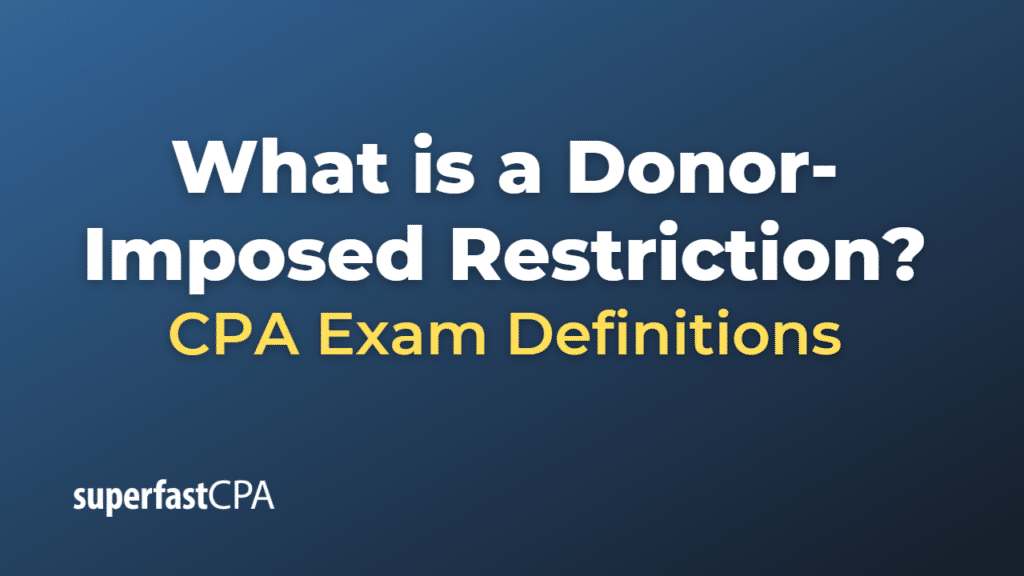Donor-Imposed Restriction
A donor-imposed restriction is a specific requirement that a donor places on a contribution or gift to a non-profit organization, limiting how or when the donated funds or assets can be used.
Donor-imposed restrictions can be either:
- Temporary: These restrictions are related to a particular purpose (purpose restriction) or time (time restriction). A purpose restriction requires the nonprofit to spend the funds on a specific program or project. A time restriction requires the nonprofit to wait until a certain period passes or a specific event occurs before the funds can be used. When the specified purpose is fulfilled or the time restriction passes, the funds are “released from restriction” and the nonprofit can use them for other purposes.
- Permanent: The donor stipulates that the funds must be maintained in perpetuity, typically in an endowment. The nonprofit can use the income generated by the endowment (for example, from interest or dividends), but the original gift amount (the principal) must be preserved and cannot be spent.
In the United States, under accounting standards established by the Financial Accounting Standards Board (FASB), non-profits must track and report on the use of restricted donations to ensure they are being used in accordance with the donor’s intent. This involves maintaining separate accounts for restricted and unrestricted funds and providing detailed reporting on the use of restricted funds.
As with other complex financial matters, non-profit organizations should consult with a qualified accountant or financial advisor to ensure they are properly managing and accounting for restricted donations.
Example of a Donor-Imposed Restriction
Let’s consider both temporary and permanent donor-imposed restrictions.
Temporary restriction example:
Let’s say a donor gives $10,000 to a local animal shelter, specifying that the funds must be used to support a new spay and neuter program. This is a purpose restriction. The shelter must use the funds for the specified purpose – if they spend it on other things, like administrative costs or a different program, they would be violating the restriction. Once all the money has been spent on the spay and neuter program, the funds are considered “released from restriction.”
Permanent restriction example:
Suppose a donor gives $100,000 to a university with the stipulation that the funds are to be held in perpetuity and only the interest earned can be used to provide a scholarship for a student studying in a specific field each year. This is a permanent restriction. The university cannot spend the original $100,000, but they can use the income generated by that money to provide the scholarship as directed by the donor. The original donation amount will remain as a permanently restricted asset on the university’s financial statements.
These examples simplify the process a bit. In reality, accounting for donor-restricted funds can be quite complex, and organizations typically need to work with a qualified accountant to ensure they are correctly tracking and managing these funds.













